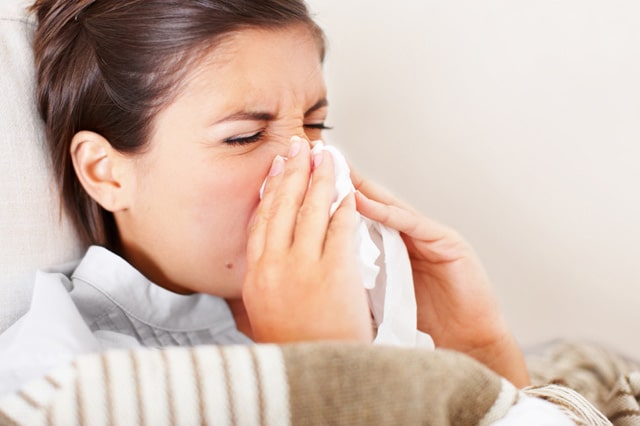The common cold and flu makes millions of people miserable every year. Currently, no cure exists for upper respiratory infections caused by cold and flu viruses. Treatment consists of managing symptoms until the immune system can eradicate the virus responsible. Since there are many different products available that contain a variety of active ingredients, the selection of medications to treat cold and flu symptoms can be confusing.
Treatment of Chest Congestion
Chest congestion results from the accumulation of thick mucus and phlegm in the bronchial airway. Guaifenesin is a medication that is used primarily to relieve chest congestion. Guaifenesin acts by increasing volume and decreasing the viscosity of mucous secretions in the airway. As a result, it becomes easier to expectorate the mucous through coughing.

Treatment of Cough
Coughing is a result of nasal drainage and stimulation of nerve endings in the throat. Dextromethorphan acts on the brain to increase the cough threshold. As a result, the amount of nerve input required to trigger the cough reflex is increased. Although the suppression of cough may seem counterintuitive when trying to expectorate mucus congestion in the chest, it may be beneficial when coughing becomes bothersome or intolerable.
Treatment of Sore Throat
Sore throat lozenges with active medication contain an anesthetic such as benzocaine. Benzocaine works by numbing the nerve endings in the back of the throat. Throat sprays contain phenol, which acts as an antiseptic and analgesic to reduce pain. The use of non-steroidal anti-inflammatory drugs (NSAIDs) such as ibuprofen or naproxen can also reduce pain associated with a swollen and sore throat.
Zinc lozenges are available over the counter and can also be dissolved in the mouth. Although they do not act directly to treat a sore throat, there is some data to suggest that they may inhibit viral replication and migration. Clinical studies have yielded conflicting data to whether zinc lozenges shorten the duration of the common cold.
The active ingredients used to treat cold and flu symptoms in the chest and throat area may be purchased alone or as a combination product that contains other active medications to treat additional symptoms. Although generally safe, patients should always read the package labeling of cold and flu medications for restrictions on age and certain health conditions. In addition, patients should always contact a physician if they have any safety concerns before using any of these products.